Canadian Energy Centre
Ignoring the global picture and making Canadians poorer: Energy and economic leaders on Ottawa’s oil and gas emissions cap
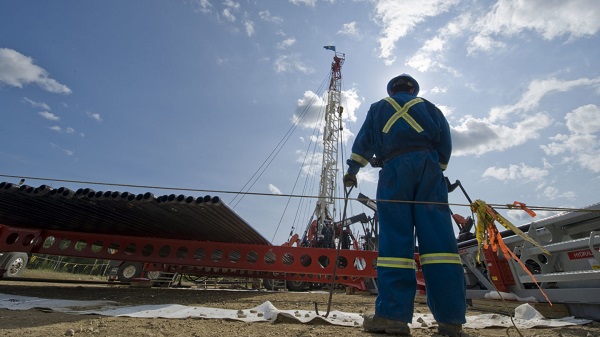
From the Canadian Energy Centre
The federal government’s draft rules to cap emissions – and by credible analysis, production – from Canada’s oil and gas sector will make Canadians poorer, won’t reduce world emissions, and are a “slap in the face” to Indigenous communities.
That’s the view of several leaders in energy and the economy calling out the negative consequences of Ottawa’s new regulations, which were announced on November 4.
Here’s a selection of what they have to say.
Goldy Hyder, CEO, Business Council of Canada
“At a time when Canada’s economy is stalling, imposing an oil and gas emissions cap will only make Canadians poorer. Strong climate action requires a strong economy. This cap will leave us with neither.”
Deborah Yedlin, CEO, Calgary Chamber of Commerce
“Canada would stand as the only country in the world to move forward with a self-imposed emissions cap.
“Given that our economic growth numbers have been underwhelming–and our per-person productivity lags that of the United States by $20,000, one would expect the government to be more focused on supporting sectors that are critical to economic growth rather than passing legislation that will compromise investment and hamper our growth prospects.
“…If the Canadian government wants to reduce emissions, it should follow the private sector’s lead – and strong track record – and withdraw the emissions cap.”
Stephen Buffalo, CEO, Indian Resources Council of Canada
“Over the past four decades, Canadian governments urged and promoted Indigenous peoples to engage in the natural resource economy. We were anxious to break our dependence on government and, even more, to exercise our treaty and Indigenous rights to build our own economies. We jumped in with far more enthusiasm and commitment than most Canadians appreciate.
“And now, in a bid to make Canada look ecologically virtuous on the world stage, the Liberal government imposed further restrictions on the oil and gas sector. This is happening as Indigenous engagement, employment and equity investment are growing and at a time when our communities have had their first taste of real and sustainable prosperity since the newcomers killed off all the buffalo. Thanks for nothing.”
Trevor Tombe, professor of economics, University of Calgary School of Public Policy
“[The emissions cap] is a wedge issue that’s going to be especially popular in Quebec. And I don’t think the [federal government’s] thinking goes much further than that.”
Kendall Dilling, president, Pathways Alliance
“A decrease in Canadian production has no impact on global demand – meaning another country’s oil will simply fill the void and the intended impact of the emissions cap is negated at a global level.
“An emissions cap gives industry less – not more – of the certainty needed to make long-term investments that create jobs, economic growth and tax revenues for all levels of government. It simply makes Canada less competitive.”
Michael Belenkie, CEO, Advantage Energy
“Canada’s emissions profile is not unusual. What’s unusual about Canada and our emissions is we seem to be the only exporting nation of the world that is willing to self-immolate. All we’re doing is we’re shutting ourselves down at our own expense and watching global emissions increase.”
Kevin Krausert, CEO and co-founder, Avatar Innovations
“The emissions cap risks delaying – if not derailing – a whole suite of emissions-reduction technology projects. The reason is simple: it has added yet another layer of uncertainty and complexity on already skinny investment decisions by weakening the most effective mechanism Canada has in place.
“…After nearly 15 years of experimenting in a complicated regulatory system, we’ve finally landed on one of the most globally effective and fungible carbon markets in the world in Alberta, called TIER.
“What the federal emissions cap has done is introduce uncertainty about the future of TIER. That’s because the cap has its own newly created cap-and-trade system. It takes TIER’s 15 years of experience and market knowledge and either duplicates functioning markets or creates a whole new market that may take another 15 years to get right.”
Dennis Darby, CEO, Canadian Manufacturers & Exporters
“The federal government’s announcement of a cap and trade on oil and gas emissions threatens Canada’s energy trade, economic interests, and national unity.”
Adam Legge, president, Business Council of Alberta
“The oil and gas emissions cap is a discriminatory and divisive policy proposal—the epitome of bad public policy. It will likely cap Canadian prosperity—billions of dollars and tens of thousands of jobs lost for no benefit, and the burden will be borne largely in one region and one sector.”
Lisa Baiton, CEO, Canadian Association of Petroleum Producers
“The result would be lower production, lower exports, fewer jobs, lower GDP and lower revenues to governments to fund critical infrastructure and social programs on which Canadians rely.”
Statement, Canadian Association of Energy Contractors
“The Trudeau government does not care about Canadian blue-collar, middle-class energy workers who rely on the industry to support their families. It does not care about small, medium and Indigenous energy service businesses that operate in rural and remote communities across Western Canada. And it certainly does not care about supporting our allies who are desperate for oil and gas from sources other than regimes such as Russia or Iran.”
Peter Tertzakian, executive director, ARC Energy Research Institute
“Focusing on a single sector while ignoring others is problematic because each tonne of emissions has the same impact on climate change, regardless of its source. It makes little sense to impose potentially higher economic burdens on one economic sector when you could reduce emissions elsewhere at a lower cost.”
Shannon Joseph, chair, Energy for a Secure Future
“Canada continues to pursue its climate policy in a vacuum, ignoring the big picture of global emissions. This places at risk our international interests, tens of thousands of good paying jobs and important progress on reconciliation.”
Adam Sweet, director for Western Canada, Clean Prosperity
“Layering on a new cap-and-trade system for oil and gas producers adds uncertainty and regulatory complexity that risks undermining investment in emissions reductions just as we’re getting close to landing significant new decarbonization projects here in Alberta.”
2025 Federal Election
Canada’s pipeline builders ready to get to work
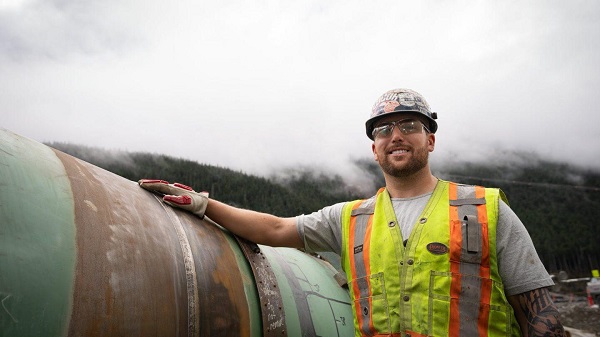
From the Canadian Energy Centre
“We’re focusing on the opportunity that Canada has, perhaps even the obligation”
It was not a call he wanted to make.
In October 2017, Kevin O’Donnell, then chief financial officer of Nisku, Alta.-based Banister Pipelines, got final word that the $16-billion Energy East pipeline was cancelled.
It was his job to pass the news down the line to reach workers who were already in the field.
“We had a crew that was working along the current TC Energy line that was ready for conversion up in Thunder Bay,” said O’Donnell, who is now executive director of the Mississauga, Ont.-based Pipe Line Contractors Association of Canada (PLCAC).
“I took the call, and they said abandon right now. Button up and abandon right now.
“It was truly surreal. It’s tough to tell your foreman, who then tells their lead hands and then you inform the unions that those three or four or five million man-hours that you expected are not going to come to fruition,” he said.

Workers guide a piece of pipe along the Trans Mountain expansion route. Photograph courtesy Trans Mountain Corporation
“They’ve got to find lesser-paying jobs where they’re not honing their craft in the pipeline sector. You’re not making the money; you’re not getting the health and dental coverage that you were getting before.”
O’Donnell estimates that PLCAC represents about 500,000 workers across Canada through the unions it works with.
With the recent completion of the Trans Mountain expansion and Coastal GasLink pipelines – and no big projects like them coming on the books – many are once again out of a job, he said.
It’s frustrating given that this could be what he called a “golden age” for building major energy infrastructure in Canada.
Together, more than 62,000 people were hired to build the Trans Mountain expansion and Coastal GasLink projects, according to company reports.
O’Donnell is particularly interested in a project like Energy East, which would link oil produced in Alberta to consumers in Eastern and Atlantic Canada, then international markets in the offshore beyond.
“I think Energy East or something similar has to happen for millions of reasons,” he said.
“The world’s demanding it. We’ve got the craft [workers], we’ve got the iron ore and we’ve got the steel. We’re talking about a nation where the workers in every province could benefit. They’re ready to build it.”

The “Golden Weld” marked mechanical completion of construction of the Trans Mountain Expansion Project on April 11, 2024. Photo courtesy Trans Mountain Corporation
That eagerness is shared by the Progressive Contractors Association of Canada (PCA), which represents about 170 construction and maintenance employers across the country.
The PCA’s newly launched “Let’s Get Building” advocacy campaign urges all parties in the Canadian federal election run to focus on getting major projects built.
“We’re focusing on the opportunity that Canada has, perhaps even the obligation,” said PCA chief executive Paul de Jong.
“Most of the companies are quite busy irrespective of the pipeline issue right now. But looking at the long term, there’s predictability and long-term strategy that they see missing.”
Top of mind is Ottawa’s Impact Assessment Act (IAA), he said, the federal law that assesses major national projects like pipelines and highways.
In 2023, the Supreme Court of Canada found that the IAA broke the rules of the Canadian constitution.
The court found unconstitutional components including federal overreach into the decision of whether a project requires an impact assessment and whether a project gets final approval to proceed.
Ottawa amended the act in the spring of 2024, but Alberta’s government found the changes didn’t fix the issues and in November launched a new legal challenge against it.
“We’d like to see the next federal administration substantially revisit the Impact Assessment Act,” de Jong said.
“The sooner these nation-building projects get underway, the sooner Canadians reap the rewards through new trading partnerships, good jobs and a more stable economy.”
Canadian Energy Centre
First Nations in Manitoba pushing for LNG exports from Hudson’s Bay
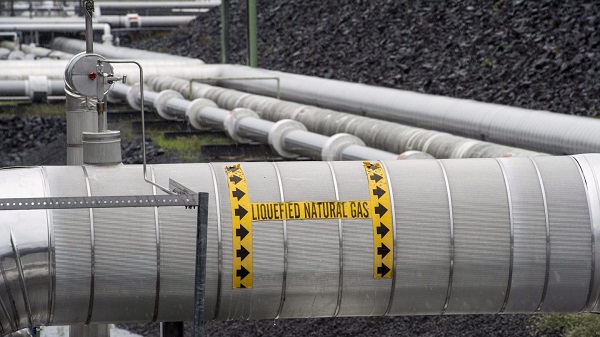
From the Canadian Energy Centre
By Will Gibson
NeeStaNan project would use port location selected by Canadian government more than 100 years ago
Building a port on Hudson’s Bay to ship natural resources harvested across Western Canada to the world has been a long-held dream of Canadian politicians, starting with Sir Wilfred Laurier.
Since 1931, a small deepwater port has operated at Churchill, Manitoba, primarily shipping grain but more recently expanding handling of critical minerals and fertilizers.
A group of 11 First Nations in Manitoba plans to build an additional industrial terminal nearby at Port Nelson to ship liquefied natural gas (LNG) to Europe and potash to Brazil.
Robyn Lore, a director with project backer NeeStaNan, which is Cree for “all of us,” said it makes more sense to ship Canadian LNG to Europe from an Arctic port than it does to send Canadian natural gas all the way to the U.S. Gulf Coast to be exported as LNG to the same place – which is happening today.
“There is absolutely a business case for sending our LNG directly to European markets rather than sending our natural gas down to the Gulf Coast and having them liquefy it and ship it over,” Lore said. “It’s in Canada’s interest to do this.”
Over 100 years ago, the Port Nelson location at the south end of Hudson’s Bay on the Nelson River was the first to be considered for a Canadian Arctic port.
In 1912, a Port Nelson project was selected to proceed rather than a port at Churchill, about 280 kilometres north.
The Port Nelson site was earmarked by federal government engineers as the most cost-effective location for a terminal to ship Canadian resources overseas.
Construction started but was marred by building challenges due to violent winter storms that beached supply ships and badly damaged the dredge used to deepen the waters around the port.
By 1918, the project was abandoned.
In the 1920s, Prime Minister William Lyon MacKenzie King chose Churchill as the new location for a port on Hudson’s Bay, where it was built and continues to operate today between late July and early November when it is not iced in.
Lore sees using modern technology at Port Nelson including dredging or extending a floating wharf to overcome the challenges that stopped the project from proceeding more than a century ago.
He said natural gas could travel to the terminal through a 1,000-kilometre spur line off TC Energy’s Canadian Mainline by using Manitoba Hydro’s existing right of way.
A second option proposes shipping natural gas through Pembina Pipeline’s Alliance system to Regina, where it could be liquefied and shipped by rail to Port Nelson.
The original rail bed to Port Nelson still exists, and about 150 kilometers of track would have to be laid to reach the proposed site, Lore said.
“Our vision is for a rail line that can handle 150-car trains with loads of 120 tonnes per car running at 80 kilometers per hour. That’s doable on the line from Amery to Port Nelson. It makes the economics work for shippers,” said Lore.
Port Nelson could be used around the year because saltwater ice is easier to break through using modern icebreakers than freshwater ice that impacts Churchill between November and May.
Lore, however, is quick to quell the notion NeeStaNan is competing against the existing port.
“We want our project to proceed on its merits and collaborate with other ports for greater efficiency,” he said.
“It makes sense for Manitoba, and it makes sense for Canada, even more than it did for Laurier more than 100 years ago.”
-

 2025 Federal Election2 days ago
2025 Federal Election2 days agoPoilievre Campaigning To Build A Canadian Economic Fortress
-

 Alberta17 hours ago
Alberta17 hours agoGovernments in Alberta should spur homebuilding amid population explosion
-

 Automotive2 days ago
Automotive2 days agoCanadians’ Interest in Buying an EV Falls for Third Year in a Row
-
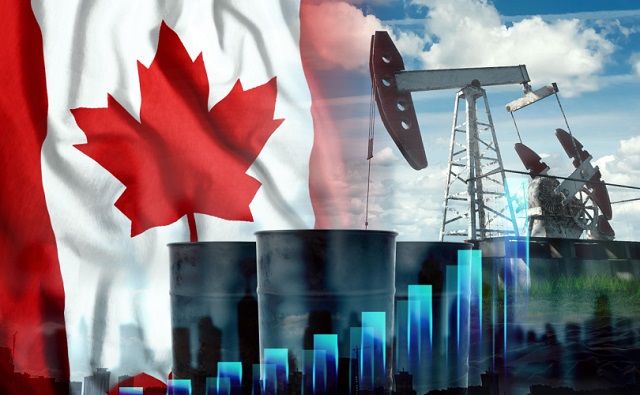
 2025 Federal Election2 days ago
2025 Federal Election2 days agoThe Cost of Underselling Canadian Oil and Gas to the USA
-
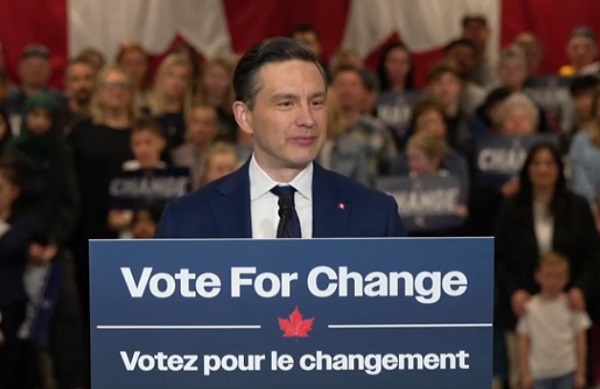
 2025 Federal Election2 days ago
2025 Federal Election2 days agoAs PM Poilievre would cancel summer holidays for MP’s so Ottawa can finally get back to work
-

 armed forces1 day ago
armed forces1 day agoYet another struggling soldier says Veteran Affairs Canada offered him euthanasia
-

 conflict1 day ago
conflict1 day agoWhy are the globalists so opposed to Trump’s efforts to make peace in Ukraine?
-

 2025 Federal Election21 hours ago
2025 Federal Election21 hours agoCarney’s budget is worse than Trudeau’s









